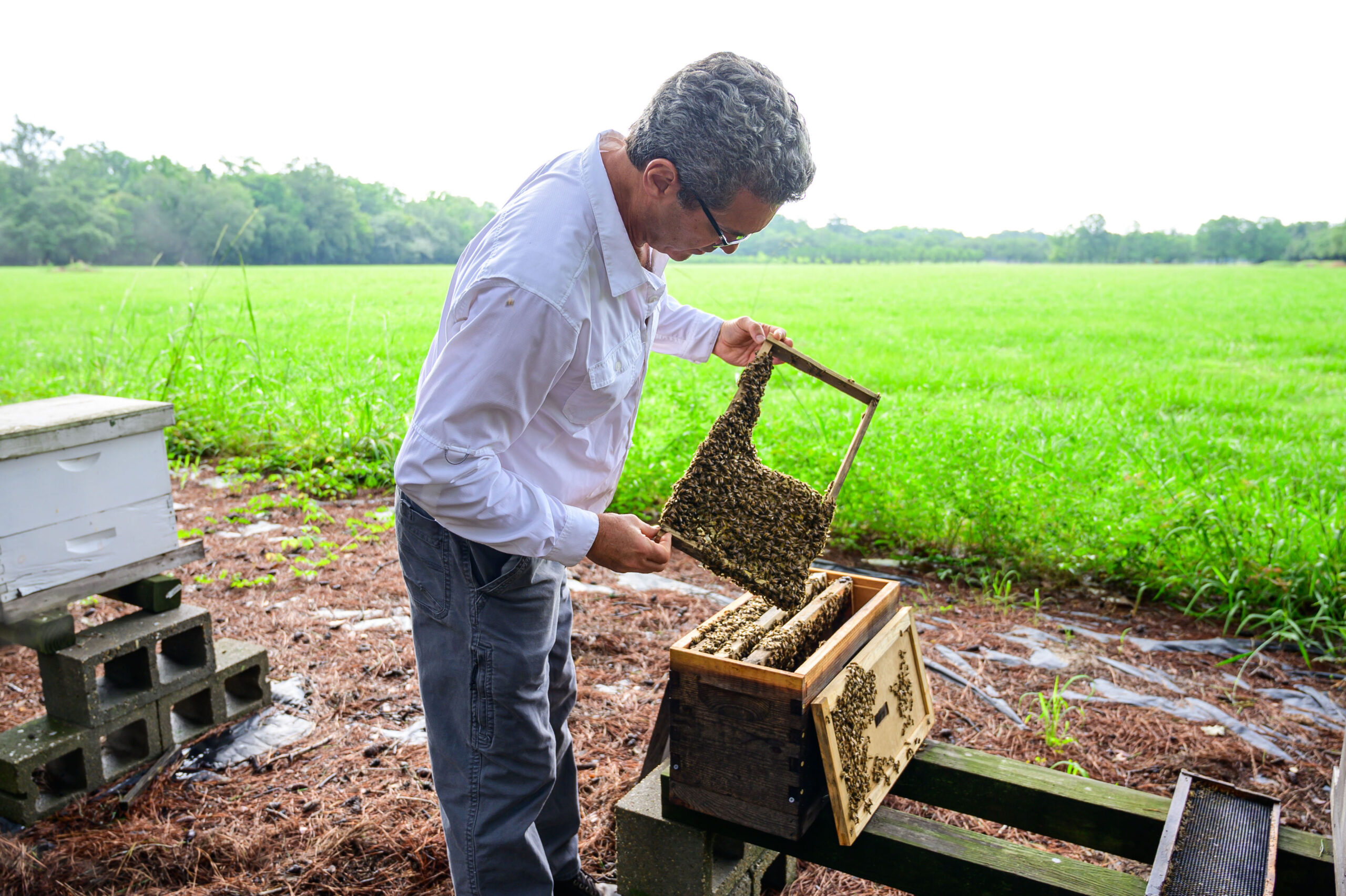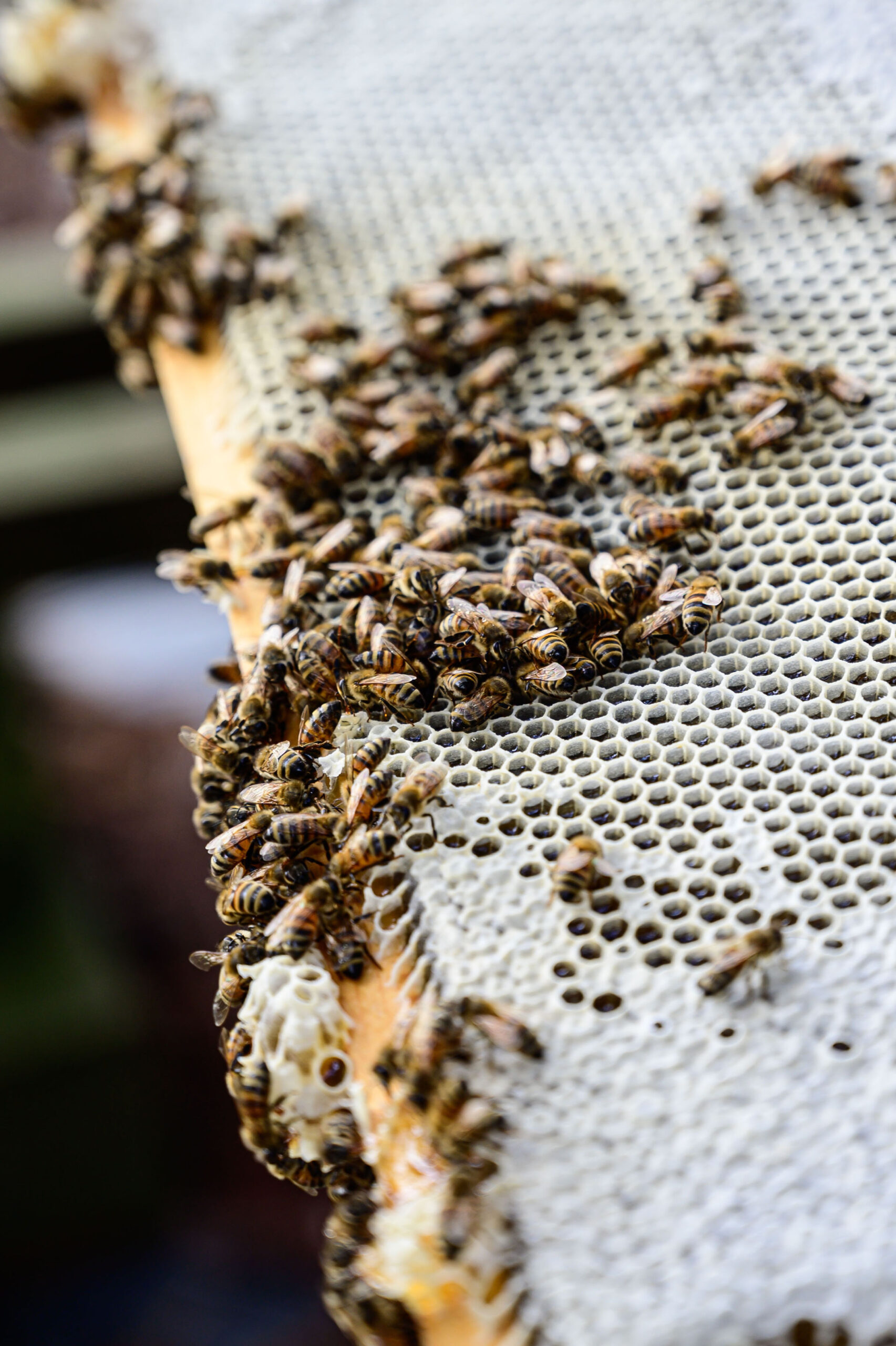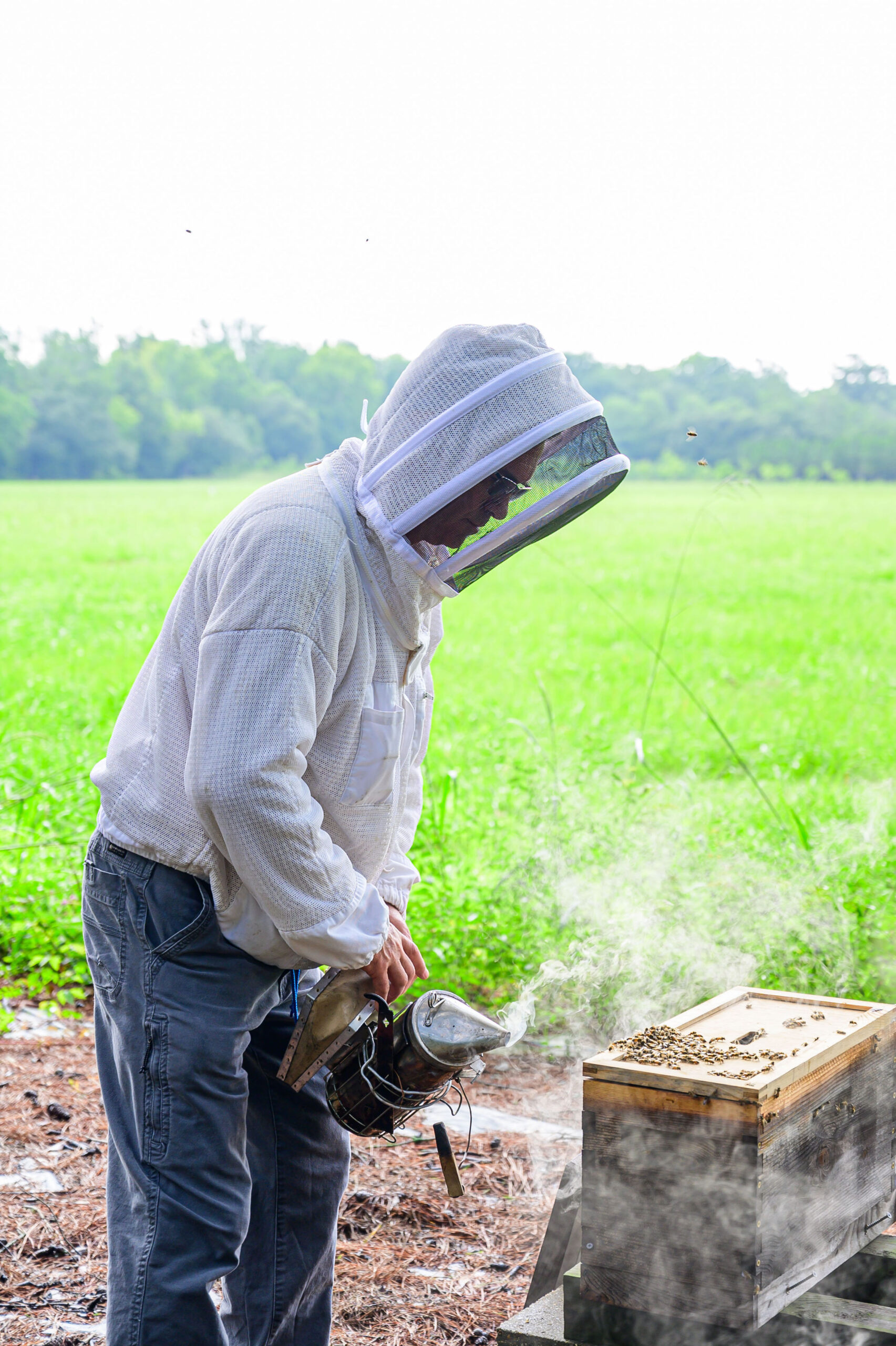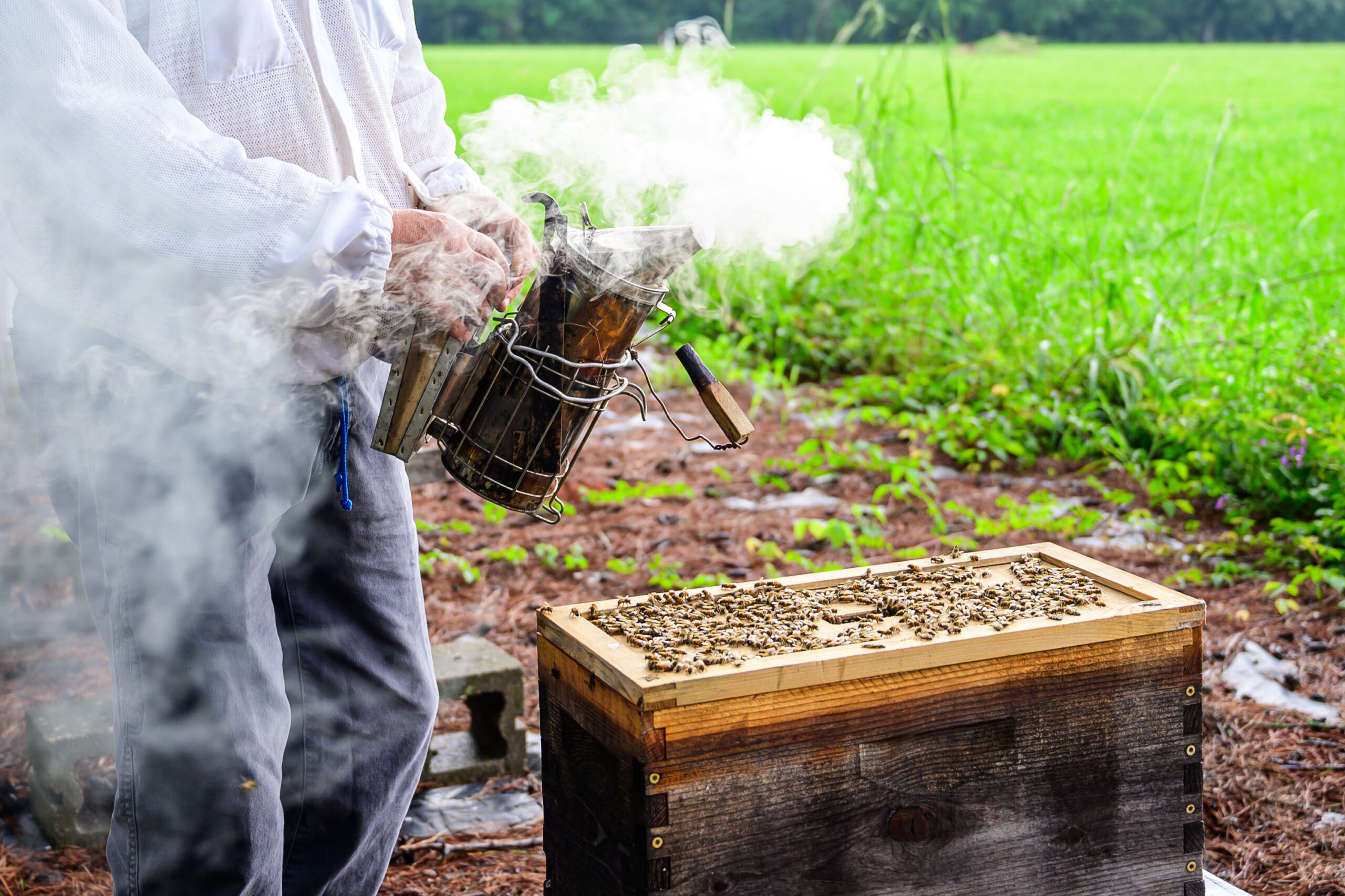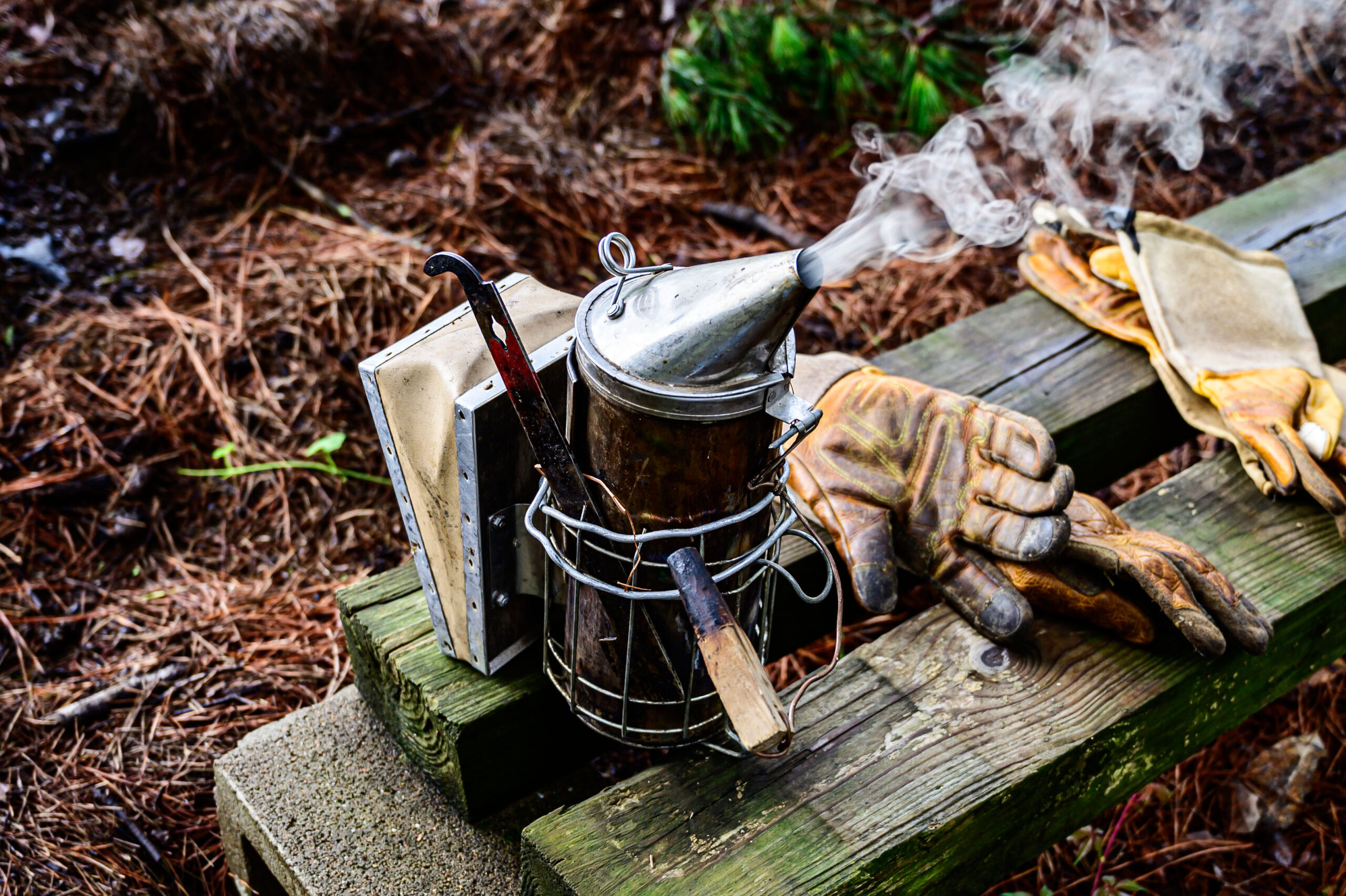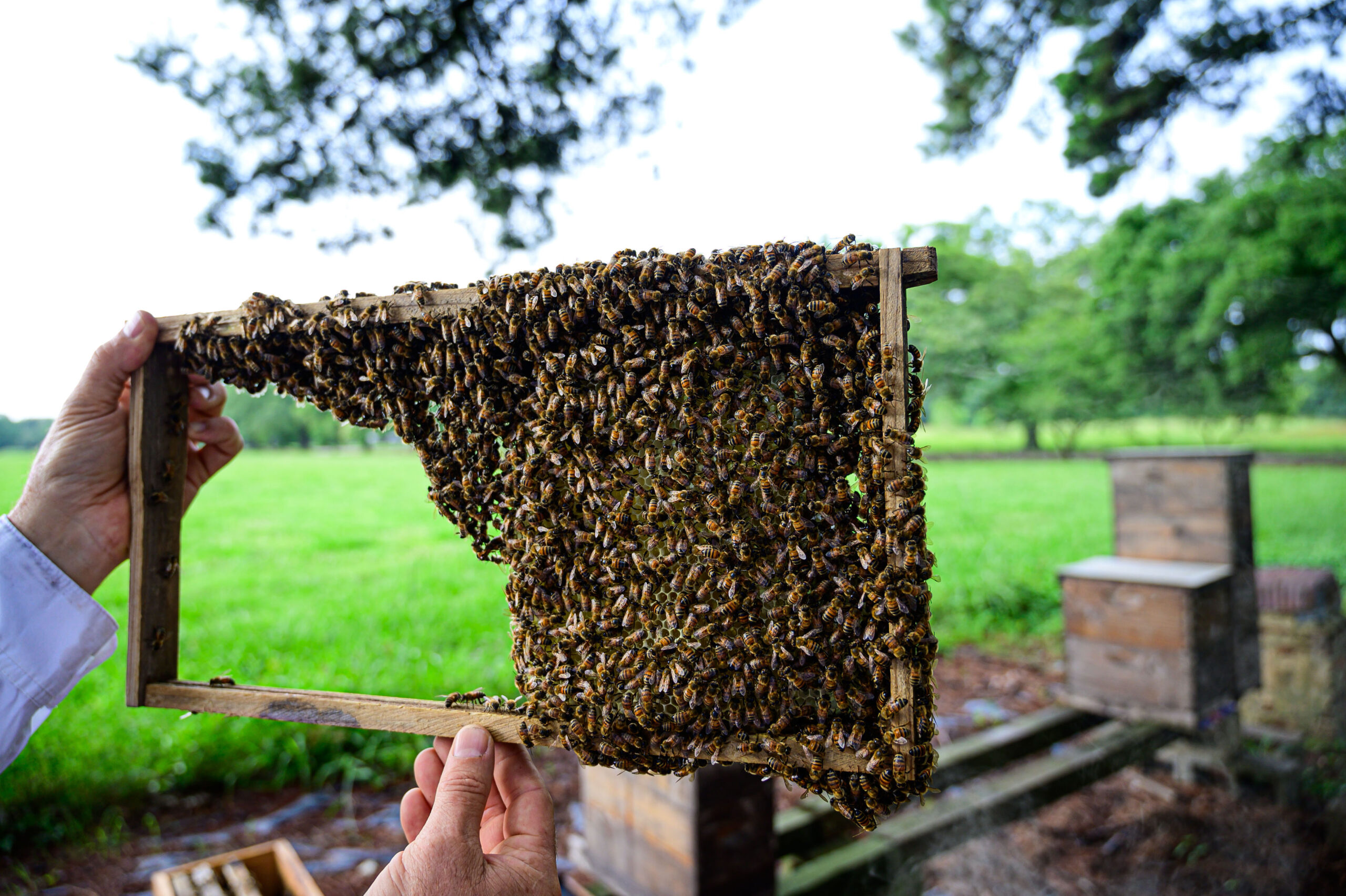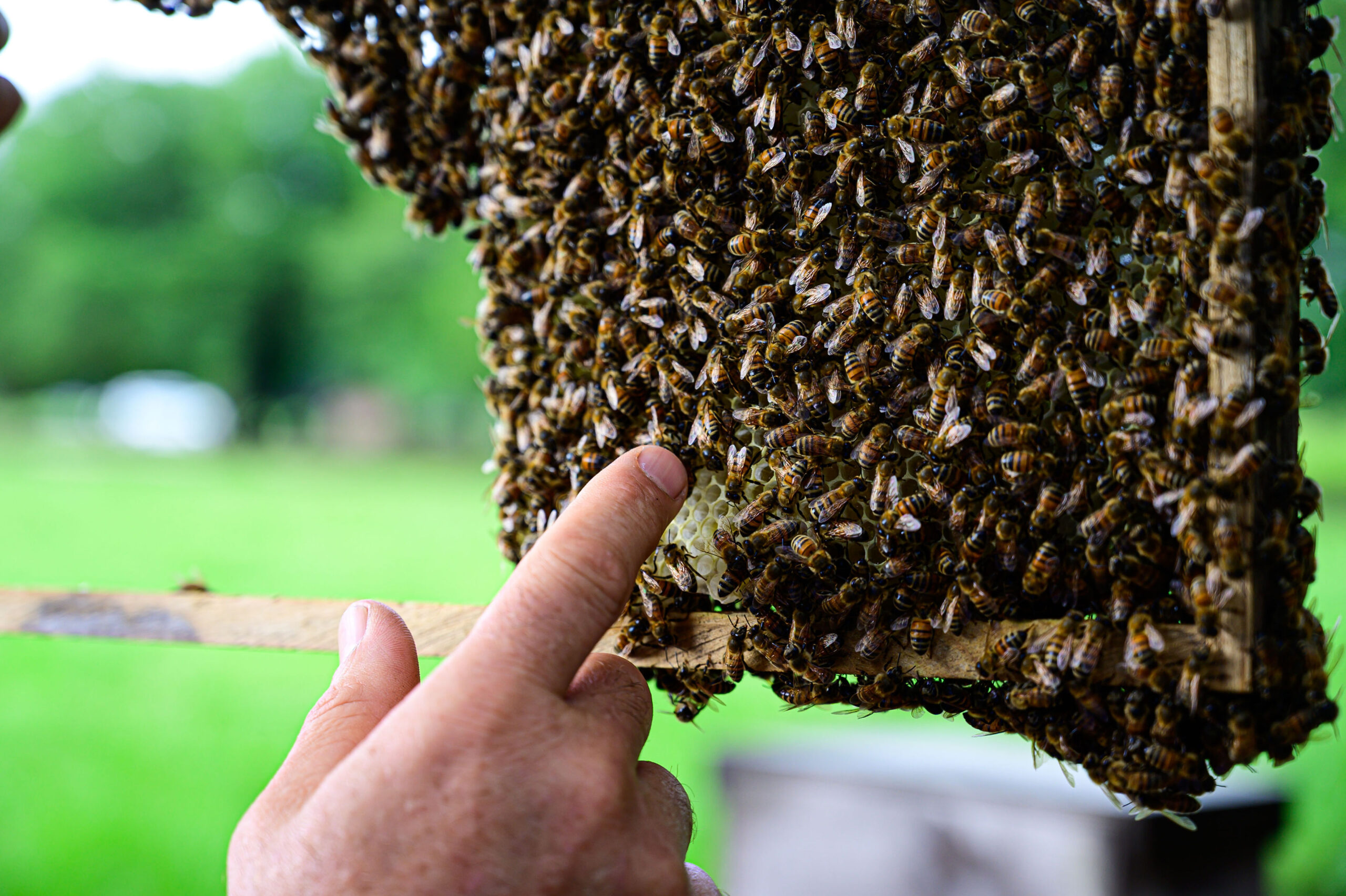
How Capital Region beekeepers are rescuing bees and pushing research forward
About 20 years ago, Kevin Langley was traveling internationally for his job in the nonprofit and government sector when he picked up a call from his wife: There were bees in the house.
Their kids were young, and the couple worried about bee stings. Pest control came and sprayed the house in chemicals, killing the bees but also leaving behind what Langley calls a “chemical spill” to deal with.
“Here I am trying to save the world, and I couldn’t even save the bees in my own house,” Langley recalls.
|
|
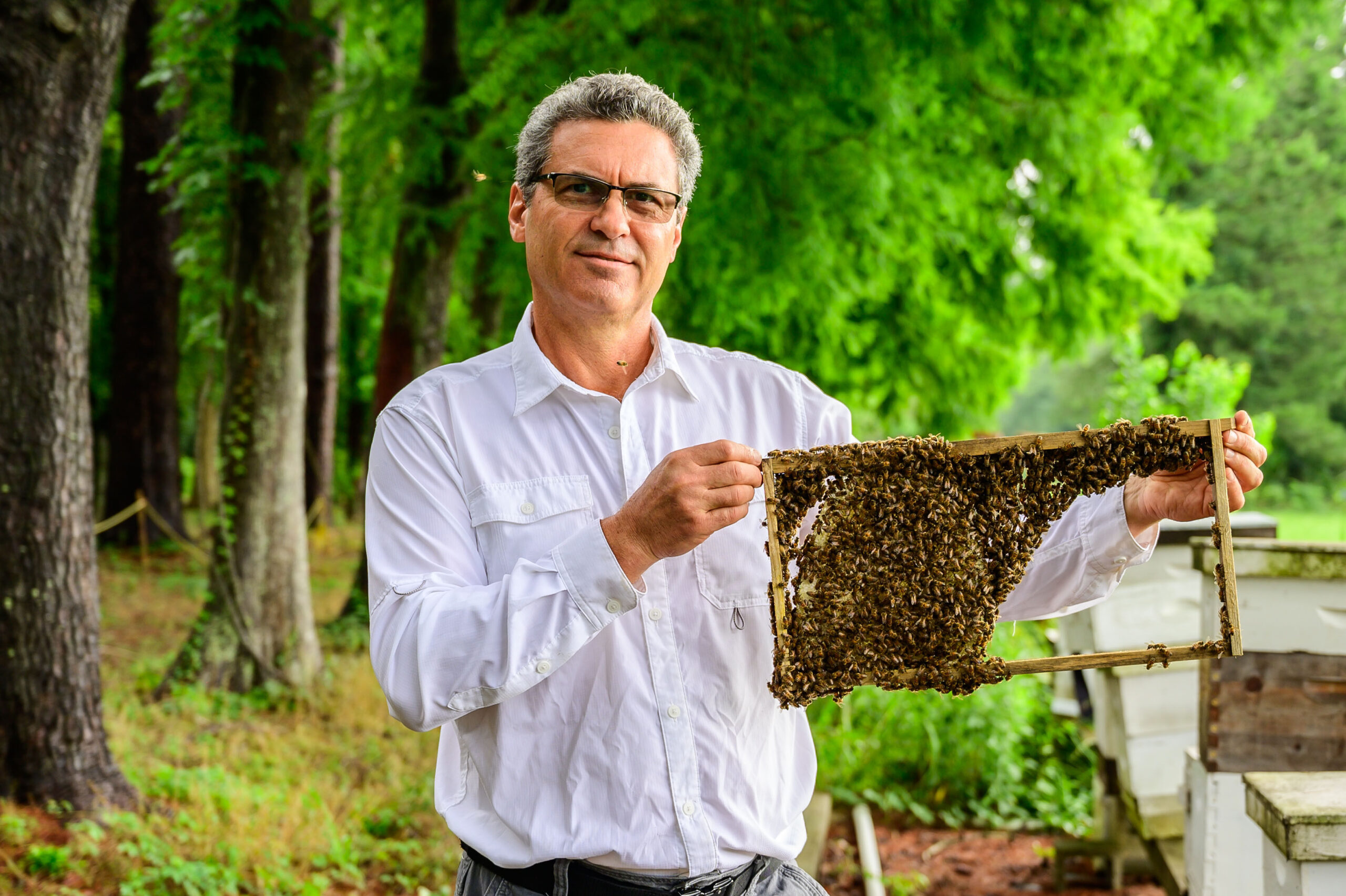
About five months later, another swarm colonized a tree in his backyard. Langley was determined that its fate would be different. Since then, he has focused on bee rescue, relocation, research and education. Today, he serves as president of the Capital Area Beekeepers Association.
Unlike the general beekeeping stereotype, Langley’s work is more industry-based than honey-based. While he produces some honey, he finds the research and education aspect of beekeeping more engaging. And a large part of his role is focused on rescuing and relocating bees.
“Most people think of a beekeeper in a bee suit, and I spend more of my time not in a bee suit, sending emails, coordinating phone calls,” he says.
Local tree companies often call Langley or other Baton Rouge beekeepers to relocate bees found in tree hollows the insects call home. When that happens, Langley removes a 6- to 10-foot section from the tree and transports it and the bee colony to a safe location.
Last week, he rescued a bee colony from the roof of Our Lady of Mercy Catholic Church, roughly 30 feet in the air.
“I have 13 rescue apiaries strategically placed all over the Baton Rouge area,” Langley says. “I have forests full of relocated trees, so what I’m doing is essentially rescuing and rewilding feral colonies.”
Langley works with organizations like LSU to conduct research on the rescued bees. At Burden Museum & Gardens, his bees are cross-pollinating the research station’s sweet potatoes and helping scientists create a more resilient variety of the root vegetable. He’s conducting cover crop and agricultural research at his research farm in southwest Louisiana, and LSU is using the property for its own studies on rice.
He says Baton Rouge and Louisiana are important areas for bee research.
“Louisiana has one of the largest clean forage areas in the country,” Langley says, “which is vital to bee health, queen-rearing and raising new colonies.”
In fact, Baton Rouge is home to the USDA Honey Bee Breeding, Genetics, and Physiology Research Laboratory, which has performed research on honey bee health and breeding for nearly 70 years.
There are roughly 2.7 million bee colonies in the U.S. that pollinate crops like almonds, apples and berries. According to the USDA, one out of every three bites of food that Americans eat is dependent on animal pollinators like bees, bats and butterflies.
“Bees are critical to food security, and with organizations like Capital Area Beekeepers Association, Louisiana Beekeepers Association and other organizations, we (beekeepers) are able to communicate and address the needs of the industry and help the bees,” Langley says.
A day in Langley’s life is different from that of the average Baton Rougean. But evidence of his work can be found all over the Capital Region—in beautiful magnolias, big strawberries, sunny black-eyed Susans and much, much more.
How you can help
How locals can help protect Baton Rouge bees
Avoid pesticides
Pesticides can be lethal or sublethal to bees. Use them sparingly, or avoid them entirely.
Plant trees and native plants
Trees provide food sources and habitats for bees, and planting native plants that bloom throughout the growing season ensures the bees have access to nectar and pollen.
Not everything has to be manicured
Langley says leaving some areas undisturbed creates natural habitats for individual bees.
Buy local honey and organic produce
Support local beekeepers by buying their honey and purchasing organic produce to reduce bees’ exposure to chemicals.
Educate yourself on local bee ecosystems and populations
Participate in educational programs at research centers like LSU Hilltop Arboretum and Burden Museum & Gardens.
|
|
|
